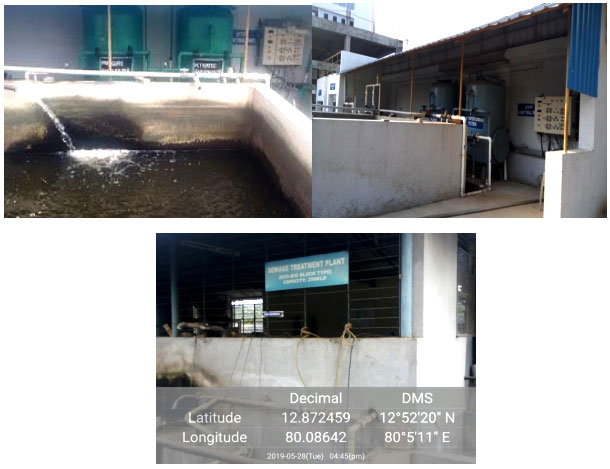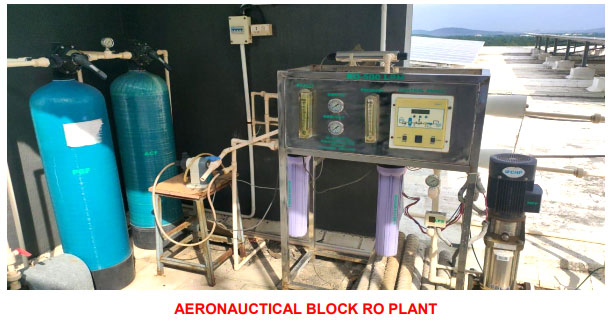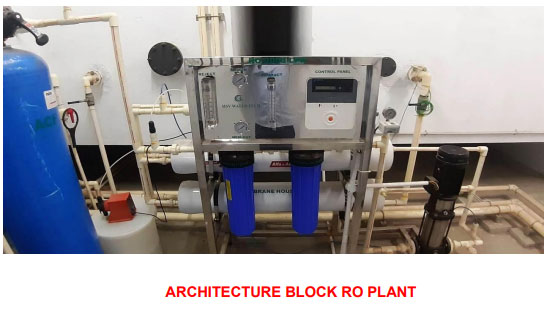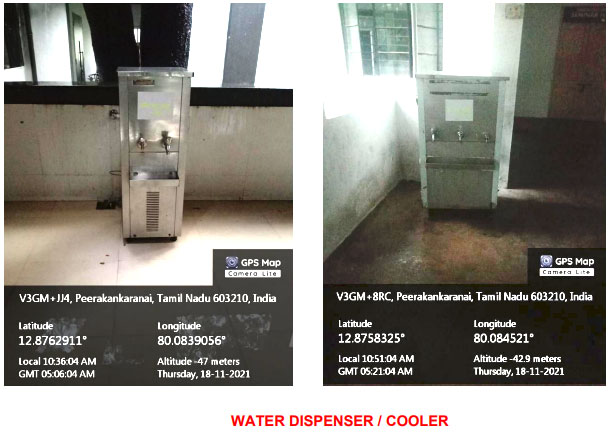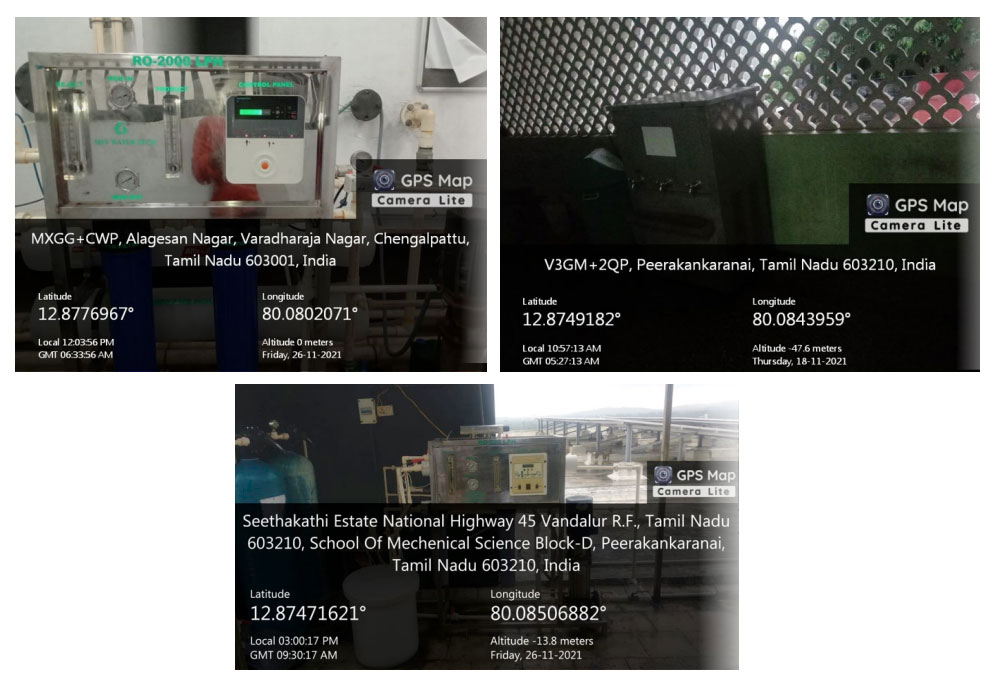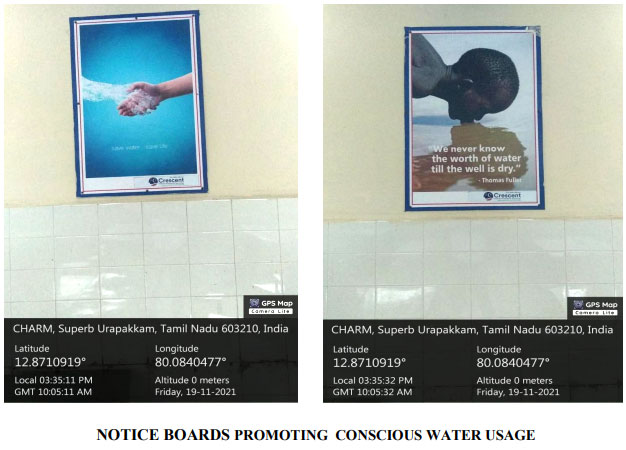- #29953 (no title)
- #22568 (no title)
- #30351 (no title)
- #33271 (no title)
- 10th Convocation Ceremony
- 2020
- 2022
- About FTA
- About our Institution
- About us
- Academic Audit Forms
- ACCREDITATION
- Accreditation & Ranking
- Accreditation & Ranking
- Accreditation & Ranking
- Accredited with “A” GRADE by NAAC
- Activities
- Administration
- Admissions
- Aerospace Engineering
- AICTE 360 Degree Feedback
- AICTE-MD 2022
- Alumni Avenue
- Alumni Endowment Fund
- alumni feedback
- Alumni Meets
- Alumni Registration
- Alumni Registration Form
- Alumni Scholarship
- Alumni Webinars
- alumni1
- Alumni2
- alumniaboutus
- alumniae
- AlumniAward
- alumnica
- alumnich
- alumnicivil
- alumnicse
- alumniece
- alumnieee
- alumnieie
- AlumniEvents
- Alumnigallery
- alumniit
- alumnime
- alumnims
- AlumniNewsLetter
- alumnipo
- Alumniregistration
- AlumniReunion
- Alumniservices
- alumnisls
- alumnistore
- alumnivideo
- Analysis & Action Taken
- Apply Now
- Apply Now
- Approval Letters
- AQAR
- AQAR 2019-20
- AQAR Part A Data of the Institution
- AQAR Part A Extended Profile
- AQAR Table Index
- Arabic & Islamic Studies
- Architecture
- Architecture & Design
- ARIIA
- Arts, Science, Commerce & Computers
- Asia
- Audit & Feedback
- Automobile Engineering
- Awards & Certificates
- Awareness Programmes
- B.Tech. Programmes
- Benefits & Composition
- Best Practices
- BSA Crescent Alumni Association
- Business
- Campus Companies
- Campus Infrastructure
- Campus Initiative for Clean Water & Sanitation
- CDOE (Cresoline)
- Centre for Digital Media
- Centre for International Relations
- Centre for Sponsored Research and Industrial Consultancy
- centreforleadership
- cfab19job
- Chancellor Profile
- chapter
- Chat with a Student Ambassador
- Chemistry
- CIEAT – 2021
- CIEAT20
- CIIC-Repository
- Civil Engineering
- Collaborations
- Commerce
- Committee Members
- Computer Applications
- Connect
- Careers
- Application Form
- Bye-laws, Rules & Regulations
- Code of Conduct
- Code of Conduct for Administrators
- Code of Conduct for Employees
- Code of Conduct for Non-teaching Staff
- Code of Conduct for Teachers
- CRESCENT FACULTY TRAINING ACADEMY
- Employees Service rules and duties & Resposibilitiess
- Governance of BSACIST
- HR Manual
- Human Values & Professional Ethics
- Job Description – BSACIST
- Assistant Dean (Research)
- CEO – CIIC
- Chief Financial Officer
- COE
- Dean – Law
- Dean (Research)
- Dean Academics
- Deputy Dean (Research)
- Deputy Registrar
- Director – Admissions
- Director – Placement
- Director – Sponsored research
- Director HR & FTA
- HOD
- Lab Assistant
- Librarian
- Network Engineer
- Physical Education
- Registrar
- School Deans
- Teaching Faculty
- Job Openings
- Leave Policy
- NAAC Supporting Document
- Organizational Structure
- Vision & Mission
- Charity
- Contact Us
- Staff
- Visit Us
- Careers
- Contact us
- Contact Us
- Course guides
- COVID-19 Updates
- Crescent Innovation & Incubation Council
- Crescent Insititute Events
- Crescent Line
- Crescent Policy Documents
- Crescent School of Business
- Crescent Sustainability Initiatives
- Crescent Tour Home
- Crescent-II Cycle-NAAC Accreditation
- Criteria1
- Criteria2
- Criteria3
- Criteria4
- Criteria5
- Criteria6
- Criteria7
- CSA-Repository
- CSB – CBS
- CSB-Repository
- CSB2018
- CSE
- csi-home
- CSP-Repository
- CTT
- CU Life
- CU Research
- CU-Events
- CU-News
- Demo
- demo.alumni
- Departments
- Digital Library
- Dissemination
- DOMS
- Downloads
- DQAC
- Dr. Indira Krishnamoorthy
- Dr. Prasanna S
- DSIR
- e-Prospectus
- e-SANAD
- ECE
- Educational Events to Public
- EEE
- EIE
- Employees (Non-Teaching) Feedback
- Employees (Teaching) Feedback
- Employers Feedback
- Energy Research Studies
- Engineering
- Engineering Admissions 2022
- English
- Enquire Now
- Estate
- Events
- Exam-Results1
- Examinations
- EXECUTIVE Summary
- Facilities1
- Faculty Appraisal Form
- Faculty Training Academy
- Faculty Training Academy
- Feedback
- Gallery
- Gender Equity programmes
- Gender Ratio
- Get Involved
- GivingBack
- Haji.Dr.K.Nilamudeen
- Home
- Home
- home-iqac
- home-nba
- How to apply
- Human Nature Qualitative Research & Politics
- Human Resources
- Important-Info
- India
- Information Technology
- Infrastructure
- Initiatives
- Institute
- About Us
- Physical Education
- Physical Education
- Schools
- Crescent School of Architecture
- Crescent School of Business
- Crescent School of Business
- Department of Management Studies (MBA) – Two Years
- Accolades
- Admission Brochure
- Contact Details
- eLearning Portal
- Events
- Extension
- Faculty
- Affiliate Faculty
- Faculty Members
- Dr. Bhuvaneswari S
- Dr. Chandrika Srinivas
- Dr. D.Asokk
Transferred to CDOE (ODL Programme) - Dr. H.Moideen Batcha
Transferred to CDOE (ODL Programme) - Dr. Haider Yasmeen
- Dr. J.Hemalatha
- Dr. Joseph Mary Rahila
- Dr. K.Srinivasan
- Dr. N.Raja Hussain
- Dr. Prasanna S
- Dr. R.Priya
- Dr. Ritu Gangil
- Dr. S.K.G.Ganesh
- Dr. S.Panboli
- Dr. S.Saravanan
- Dr. Shanmugam Munuswamy
- Dr. Takhellambam Rocky Devi
- Teaching Learning Pedagogies
- Visiting Faculty
- Infrastructure
- Overview
- Programmes Approved
- Student Achievements
- Crescent School of law
- Admission Brochure
- Blogs
- Contact Details
- eLearning Portal
- Events
- Faculty
- A.Mursalin
- Ankit Anand
- Bilal Asghar
- Dr. Aamir Majeed Parray
- Dr. Abraham Konda
- Dr. Arab Mohammed Shamiulla
- Dr. E.Priyanka
- Dr. Hassan Shareef K
- Dr. M.P.Srinivasan
- Dr. Nazneen M.Y.
- Ihsan Shahzad P.A.
- J. Lakshmi Charan
- K. Krishnaveni
- Khurram Khowaja
- M. Shamima Parveen
- Manasa Krishnakumar
- Mr. Azhar Iqbal Mozumder
- Mr. M.A. Saleem Ahmed
- Mr. Mohd. Salim
- Mrs. S. Syed Ali Fathima Nisha
- Muthamizh Thilagam P
- N.Sudalai Muthu
- Neha Parveen
- Nizamuddin Ahmad Siddiqui
- Pawan Kumar
- Prem Ram M R
- S. Saba
- Sameera Fathima K
- Samsul Sameera I
- Shahnawaz Ahmad
- Shaji. M
- Sherin Farhana E.V.
- Sukanya H
- Tamilselvi Jagadeesan
- Infrastructure
- Overview
- Programmes Approved
- Sailent Features
- Crescent School of Pharmacy
- School of Arabic & Islamic Studies
- School of Computer Information and Mathematical Sciences
- Department of Computer Applications
- Accolades
- Admission Brochure
- Contact Details
- Courses Offered
- Department Relations
- eLearning Portal
- Events
- Faculty
- Affiliated Professor
- Faculty Members
- Dr Mohamed Divan Masood M
- Dr. A.Abdul Azeez Khan
- Dr. A.Haja Alaudeen
- Dr. A.Jahir Husain
- Dr. A.Jaya
Transferred to CDOE (ODL Programme) - Dr. A.K. Reshmy
- Dr. A.K.Ashfauk Ahamed
- Dr. C.Senthil Selvi
- Dr. Deepika
- Dr. G.Shree Devi
- Dr. K.Javubar Sathick
- Dr. M.Syed Masood
- Dr. Md Oqail Ahmad
- Dr. N.Ayyanathan
Transferred to CDOE (ODL Programme) - Dr. P.Amudhavalli
- Dr. P.Sheik Abdul Khader
- Dr. R.Sabin Begum
- Dr. R.Sonia
- Dr. S.Pakkir Mohideen
- Dr. S.Shahar Banu
- Dr. V.J.Sowmya
- Dr. V.Prasanna
- Dr. V.Shenbaga priya
- Mr. A.Salman Ayaz
- Ms. P.Padmavathy
- Peer Mohamed Ziyath S
- Preeti Verma
- R.Sivakumar
- Sabaria S
- T. Pandiyavathi
- V.M.Niaz Ahamed
- Online Video Lecture
- Infrastructure
- Overview
- Programmes Approved
- Research & Consultancy
- Vision & Mission
- Department of Computer Science and Engineering
- Accolades
- Admission Brochure
- Alumni Feedback
- Contact Details
- CSE – Clubs
- CSE – Department Library
- CSE – e-Notice Board
- CSE – Social Media
- CSEA – Inaugural
- Department Relations
- e-Magazine
- eLearning Portal
- Events
- Faculty
- Affiliating Faculty
- Faculty Members
- A. Radhika
- C. Vijayalakshmi
- Dharini R
- Dr. A. Ramachandran
- Dr. A.Alif Siddiqua Begum
- Dr. Aisha Banu W.
- Dr. B.Dhanalakshmi
- Dr. B.Karthikeyan
- Dr. C.Hema
- Dr. E.Syed Mohamed
- Dr. Gino Sophia S.G.
- Dr. J.Jeyapriya
- Dr. L.Arun Raj
- Dr. M.Mohammed Thaha
- Dr. M.Sandhya
- Dr. N.Sabiyath Fatima
- Dr. S.P.Valli
- Dr. S.Revathi
- Dr. S.Sharon Priya
- Dr. S.Syed Abdul Syed
- Dr. Sharmila Sankar
- Dr. V.MuthuPriya
- Dr. Venkatesan Selvam
- Dr. X.Arputha Rathina
- J. Brindha Merin
- Madhina Banu
- Mr. R.Venkateswaran
- Mrs. Niyati Behera
- R. Akila
- S. Subhashini
- Snegaa A
- V.Balaji
- FDP (AICTE Sponsored) Videos
- Infrastructure
- Intellect – Online Events
- Mobile-Apps
- Overview
- Patents
- Placement
- Programmes Approved
- Research & Consultancy
- Students Achievements
- Department of Information Technology
- Department of Mathematics & Actuarial Science
- Department of Computer Applications
- School of Electrical and Communication Sciences
- Department of Electrical and Electronics Engineering
- Department of Electronics and Communication Engineering
- Achievements
- Admission Brochure
- Alumni
- Contact Details
- CRESCENTSAT
- Department Clubs
- E-Magazine
- eLearning Portal
- Events
- Faculty
- Affiliate faculty
- Faculty Members
- A. Priya
- A. Ramesh Kumar
- Ambika. A
- B. Sivashanmugavalli
- Dr. B. Vijayalakshmi
- Dr. C. Tharini
- Dr. G. Kannan
- Dr. Mohamed Ismail
- Dr. P.K.Jawahar
- Dr. Parnasree Chakraborty
- Dr. S. Kaja Mohideen
- Dr. V. Jean Shilpa
- G. Anuradha
- Hasan Babu H
- K. Indra Gandhi
- M. Padma Usha
- M. Selvakumar
- M. Vanmathi
- R. Anitha
- R. Iniyavan
- R. Mahalakshmi @ Issakki
- R.T.Charulatha
- S. Anusooya
- S. Kalaivani
- S. Sadhish Prabhu
- S. Syed Rafiammal
- Feedback about Department
- Industry Interaction
- Infrastructure
- International Collaborations
- Message from HOD’s desk
- NI Labview Academy
- Photo Gallery
- Placement
- Programmes Approved
- Research & Consultancy
- Vision & Mission
- Overview
- Department of Electronics and Instrumentation Engineering
- School of Infrastructure
- Department of Civil Engineering
- Accolades
- Admission Brochure
- Alumni
- Contact Details
- Dean’s Message
- Educational Visits
- eLearning Portal
- Events
- Faculty
- Affiliated Professors
- Faculty Members
- B.Kannadasan
- Dr. A. K. Kaliluthin
- Dr. J.Revathy
- Dr. K.Yogeswari
- Dr. M.S. Haji Sheik Mohammed
- Dr. Madumathi Gunasekaran
- Dr. Nisha Khanam
- Dr. P.Gajalakshmi
- Dr. Priya V.S.
- Dr. Vasanthi Padmanabhan
- Manivannan A
- Mr. S.Dhamodharan
- Mr. S.Shafeer Ahamed
- Mr. Y.Ibrahim
- Ms. K.Kanmani
- Ms. M.Ayisha Sidiqua
- Ms. ManickaPriya N
- Ms. V.Roopa
- R.Elakya
- Sheik Farid A
- ShriIndhu J
- Supporting Staff
- Infrastructure
- Overview
- Programmes Approved
- Research
- Testing and consultancy
- Vision & Mission
- Department of Civil Engineering
- School of Life Sciences
- Accolades
- Admission Brochure
- Contact Details
- eLearning Portal
- Events
- Faculty
- Dr Mohammad Waseem
- Dr. C.Simon Durairaj
- Dr. D. MubarakAli
- Dr. Gulsaz Shamim
- Dr. I. Faridha Begum
- Dr. Karthikeyan Ramalingam
- Dr. M. K. Sangeetha
- Dr. Md Khurshid Alam Khan
- Dr. Mohammad Ashfaq
- Dr. Neesar Ahmed
- Dr. P.Ashok Kumar
- Dr. S.Hemalatha
- Dr. Shazia Jamal
- Dr. Sheeza Khan
- Dr. Soumen Bera
- Dr. Sudarkodi Sukumar
- Dr. Vimalkumar
- Dr. Wasima Mohamed
- Mr. Subhamoy Banerjee
- Mr.Mohammed Abrar Basha
- Ms. S.Ranjani
- Infrastructure
- Overview
- Programmes Approved
- School of Mechanical Sciences
- Department of Aerospace Engineering
- Department of Automobile Engineering
- Department of Mechanical Engineering
- Accolades
- Admission Brochure
- Contact Details
- Department Relations
- eLearning Portal
- ETDMMT 2020
- Events
- Faculty
- Affiliated Faculty
- Faculty Members
- Dr D.R.Rajendran
- Dr Mohamed Bak Kamaludeen
- Dr. A. Arockia Julias
- Dr. A. Muthu Manokar
- Dr. A.S. Selvakumar
- Dr. H. Siddhi Jailani
- Dr. J. Mahashar Ali
- Dr. K. Sathickbasha
- Dr. M. A. Sai Balaji
- Dr. M. Abdur Rahman
- Dr. M. Pervaz Ahamed
- Dr. M. Thirumurugan
- Dr. Md. Javeed Ahamed
- Dr. Ravi Kumar
- Dr. S. Jeavudeen
- Dr. S. Mohamed Illyas
- Dr. S. Rasool Mohideen
- Dr. Serajul Haque
- Dr. Surya Rajan B
- Dr. V. Muralidharan
- Dr.R.Karunanithi
- K. Asrar Ahmed
- Mr. A. Varunkumar
- Mr. C. Sivakumar
- Mr. D. Pradeep Kumar
- Mr. G. Rajesh
- Mr. M. Balasrinivasan
- Mr. N. Ravikumar
- Mr. N. Sirajudeen
- Mr. S. Loganathan
- Mr. Sujit Tharakan
- Mr. Syed Shaul Hameed
- Publications
- Infrastructure
- Minor Degree Programs
- Overview
- Ph.D. Awarded
- Programmes Approved
- Vision & Mission
- Department of Polymer Engineering
- School of Physical and Chemical Science
- Department of Chemistry
- Department of Physics
- School of Social Sciences and Humanities
- Department of Commerce
- Admission Brochure
- Contact Details
- eLearning Portal
- Events
- Faculty
- Adjunct Faculty
- Conference Presentation Details
- Faculty Members
- A Fathima
- Asan Bawa
- C.N.Rajendra Prasad
- Dr Afzalur Rahman
- Dr. N. Vijayakumar
- Dr. A.Harikumar
- Dr. Ayub Khan Dawood
- Dr. B.Ziavuddeen
- Dr. C.Srinivasan
- Dr. Humaira Fatima
- Dr. K. Hannah Catherine
- Dr. Kogila N
- Dr. Krupa B Nair
- Dr. Mohsin Khan
- Dr. N.Indumathi
- Dr. P.Neethikumar
- Dr. Perumalraja R
- Dr. R.Mary Angelin
- Dr. R.Prakash
- Dr. Radhika. R
- Dr. S.Arun kumar
- Dr. S.Vidya
- Dr. Sibghatullah Nasir
- Dr. Syed Mohsin Ashfaquddin
- Dr.S.I.Mohideen Abdul Kadir
- Ifra Fathima I
- Mohamed Haris .O
- Mr. Mohammed Sherfuddin
- Mr. S.Rajini
- N.A.Arshiya Afrin
- R. Agatha
- Rahul P
- S Chandra Shekhar
- S. Farzana
- T. Porkodi
- Publication details
- Overview
- Programmes Approved
- Research
- Department of English
- Department of Public Policy
- Admission Brochure
- Contact Details
- Faculty
- Faculty Members
- Dr. Indira Krishnamoorthy
- Dr. Sundar M S
- M V Duraish Kumar
- Mr. Aashiq Mohammed
- Mr. Arjun Pali
- Mr. Chris Leonard Bernard
- Mr. K M Ilanchezhian
- Mr. M S Idris
- Mr. Manoj Madhav
- Mr. Naveen Kanniyan
- Mr. Prakash KAS
- Mr. Prithvi Kumar
- Mr. Rajesh Alagumani
- Mr. Steuban Xavier Dias
- Mr. Syed Shahed Hashmi
- Mr. Vijay P S
- Mrs. Freeda Fernandes
- Mrs. M R Kiran Priya
- Ms. Anne Roopa D’Souza
- Ms. Carol Prima D’ Souza
- Faculty Members
- Overview
- Programmes Approved
- Vision & Mission
- Economics
- German
- Sociology
- Tamil
- Department of Commerce
- Interdisciplinary Research
- International Admissions
- INTERNATIONAL ADMISSIONS
- International admissions
- International Faculty & Students
- International Workshop
- IQAC Home
- Islamic Studies
- ISO
- JF2019
- Job Description
- jobsplacements
- Know Your Institute
- Latest News
- Law
- Law
- LEGAL
- Library
- Life Sciences
- LikeBTN
- LMS
- Login
- Management Studies
- Management Studies
- Mandatory Disclosure
- Mandatory Disclosure
- Academic Curricula
- Accreditation
- Admission Policy
- Annual Report
- Anti-Ragging Committee
- Approval Letters
- Audit Accounts
- Campus Facilities
- Code of Conduct
- Committee for SC/ST
- Consolidated Documents for NAAC
- Distance Education
- Faculty
- Fee Structure
- GOI/MHRD-Notification
- Governance of BSACIST
- Grants-in-aid
- Green Campus & Green Policy
- Grievance Redressal Committee
- Human Values & Professional Ethics
- Infrastructure
- Internal Complaint Committee
- Minority Cell
- MOA
- NAAC-Report
- OBC Cell
- Organizational Structure
- Prevention Caste Based Discrimination
- Right to Information
- Strategic Plan – Vision Document
- Mathematics & Actuarial Science
- Mechanical Engineering
- Mechanical Sciences
- Meetings & Events
- Mentoring Systems
- Minimise water usage
- MOOC
- NAAC
- NAAC Second Cycle
- NAAC Mock Accreditation
- NBA
- New Education Policy
- News & Events
- NIRF
- NIRF 2018
- NRI Admissions
- NRI Admissions
- OBE & LOCF
- odllgbt
- Office of Alumni Relations
- Office of Alumni Relations
- Alumni Admission Flyers
- Alumni Endowment Fund
- Alumni Faculty Coordinators
- Alumni Meets
- Alumni Services
- Alumni Store
- Alumni Videos
- Alumni Webinars
- Contact us
- Distinguished Alumni Award
- Events
- Get Involved
- Home
- Newsletter
- Online Verification of Certificates
- Photo Gallery
- Reunion
- Some of our Alumni Entrepreneurs
- Some of our Prominent Alumni
- Wall of Fame
- Office of Dean (Research)
- ollgbt
- Online Grievance Redressal
- Online Programmes
- Open and Distance Learning Programmes
- Outreach Activities
- Parents Feedback
- Parents Login
- Participation and Entrepreneurship
- Perspective Plan 2020-2030
- PG ADMISSIONS
- PG Eligibility
- PG Fee Structure
- Ph.D Admissions
- Pharmacy
- Pharmacy
- Photo Gallery
- Physics
- Placements
- About us
- Achievements
- Career Counseling
- Contact us
- Events
- FAQ
- Guidance for Competitive Examinations
- IIPC Events
- Industry Accreditations
- Industry Connect
- Industry Institute Partnership Cell
- MoU
- Photo Gallery
- Placement Statistics
- Ranking
- Rating
- Recruiters
- Student Corner
- Testimonials
- Training Programmes
- Why Crescent?
- Polymer Engineering
- Postgraduate
- Postgraduate Programmes
- Privacy Policy
- Pro Chancellor Profile
- Programmes Approved
- QS
- QS I-GAUGE
- QS I-GAUGE E-LEAD
- QS Star Rating
- QS Star Rating
- RANKING
- RATING
- Reachout
- Recognitions & Awards
- Registrar Profile
- Repository@crescent
- Research
- Academic Research
- About Us
- Additional Information on Research
- Admission to Ph.D.
- Central Institution Facilities
- Circulars
- Code of Ethics
- Contact Us
- Downloads
- Journals & Publications
- Major Research Facilities
- Ph.D Regulation
- Policy on Consultancy
- Post-Doctoral Fellowship
- Research Activities
- Research Advisory Committee
- Research Board
- Research Incentive Scheme and Awards
- Research Promotion Policy
- Research Scholars
- Research Supervisors
- Research Training & Fellowship Programme
- Thesis Awarded Degree
- Vision & Mission
- Centers
- Facilities
- Programmes
- Research
- Research Publications
- Academic Research
- Research Centers
- Research Forum (Staff. Calendar)
- Research-login
- Schedule of Exams1
- SCIMS-Repository
- SDG17-2022
- sdg4 Activities
- sdg4 Policy
- sdg4 Weblink
- SDG4-2022
- sdg5 Activities
- SDG5 Outreach Activities
- sdg5 Policy
- SDG5 Weblink
- SDG5-2022
- sdg6 Activities
- sdg6 Policy
- SDG6-2022
- SDG7-2022
- Search
- SECS-Repository
- Sharing Resources to Public
- SI-Repository
- Sitemap
- SLS-Repository
- SMS-Repository
- Social Sciences and Humanities
- Solid Waste Management
- SPCS-Repository
- Sponsored Projects & Consultancy
- About Us
- Call for Proposals
- Consultancy Policy
- Consultancy Projects
- Contact Details
- Corporate Training
- Crescent Seed Money
- Energy Research
- Events
- Guideline for Proposal
- Industry Institute Partnership
- MoU
- Our Team
- Projects Completed
- Projects Ongoing / Sanctioned
- Research Highlights
- Sponsored Projects
- Vision & Mission
- SSH-Repository
- Staff Login
- Stakeholders Feedback
- Stakeholders Feedback Form
- Strategies & Functions
- Student Affairs
- About Student Affairs
- Anti Discrimination Cell
- Anti-Ragging Cell
- Capability Enhancement and Development Schemes
- Code of Conduct for students (General)
- Courses on Human Values & Professional Ethics
- Crescent Creative Strokes
- Crescent Technocrats Club
- CRESMUN
- Instruction – Degree Certificate
- Internal Complaints Committee (ICC)
- ISTD-C
- ISTD-Clubs
- NSS
- Programmes on National identities
- Rotaract Club
- Student Council
- Student E-Magazine
- Student Events & Achievements
- Student Scholarship Portal
- Students Code Of Conduct
- Students Grievance Redressal Cell (SGRC)
- YRC
- Student Grievances
- Students Feedback
- Students Login
- Study
- Team & Committee Members
- test
- test pdf1
- test pdf2
- test18
- test19
- test20
- THE Impact Ranking
- THE WUR
- This is CU
- Training Programme for Sub Inspector Cadets
- UG ADMISSIONS
- UG Eligibility
- UG Fee Structure
- Undergraduate
- Undergraduate Programmes
- Upcoming Events
- Vice Chancellor Profile
- Video Gallery
- Vidyanjali
- Vision & Objective
- walloffame
- Waste Water Treatment
- Water Consumption
- Water usage and care
- Why Crescent?
- Writers Inc Magazine
- WUR






